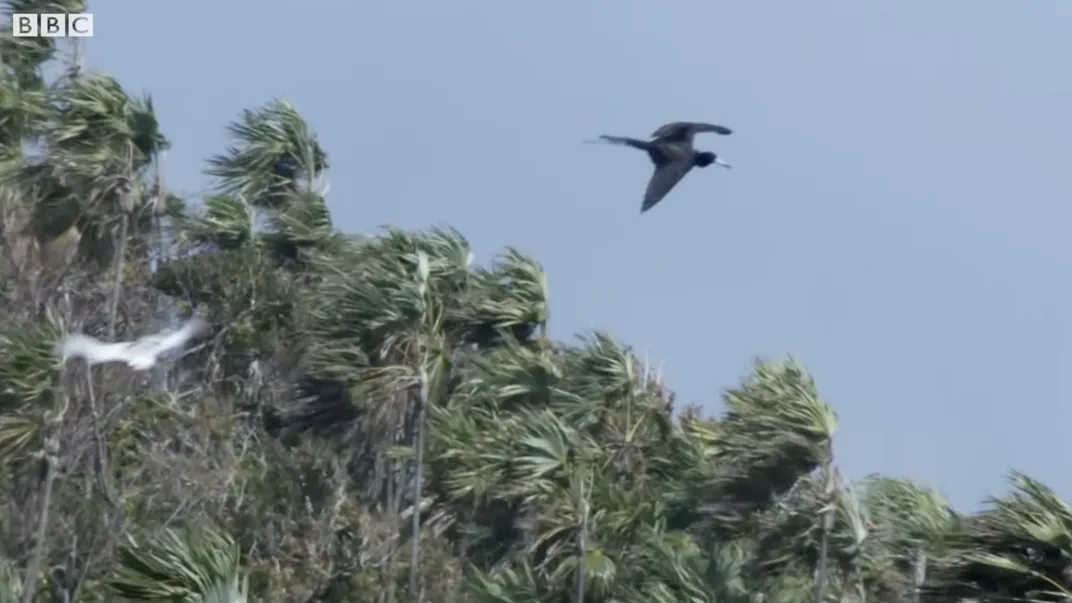‘Pirate Seabirds’ Could Become a Pathway for Deadly Avian Flu to Spread to Australia, Study Finds
Kleptoparasitism, in which a bird harasses another to steal its food, might introduce avian flu to the continent, currently the only one without the severe H5N1 strain
:focal(1024x800:1025x801)/https://tf-cmsv2-smithsonianmag-media.s3.amazonaws.com/filer_public/ec/d5/ecd5c13f-686e-403e-9346-9449521e15ec/49884969888_023631f629_k.jpg)
Thieving on the high seas comes with many dangers. For the ‘pirate seabirds’ that snatch prey from other species, stealing is a means to obtain food in a sometimes scarce environment. But among the pirate life’s many perils, contracting and transmitting a deadly disease might be a new one.
In a study published on Monday in the journal Conservation Letters, a team of scientists suggests these thieving seabirds might become vectors for the deadly H5N1 strain of avian flu, which has been wreaking havoc on bird populations across much of the planet—and potentially even spread it into Australia.
Seabirds like skuas and frigatebirds use a food-stealing strategy known as kleptoparasitism—they may harass other birds until they drop their prey, or even force them to regurgitate it. The researchers propose the saliva-covered prey could become a point of transmission for the deadly virus.
Kleptoparasitism “is brutal, effective and a core behavior for these important seabirds. But as our new research shows, it comes with major risks for the thieves,” the study authors write in the Conversation. “The new strain of avian flu is killing birds by their millions—and we found kleptoparasitism could spread the virus very easily.”
‘Pirate seabirds’ do not depend solely on stealing; they do catch their own food. Grabbing another bird’s hard-earned fish, however, can take less energy than hunting for their own. But by doing so, the seabirds put themselves at risk of catching viruses that they might later end up spreading among their own colonies.
“Many of these species are also already threatened with extinction and declining, and H5N1 will compound these threats and declines,” says lead author Simon Gorta, a conservation ecologist at the University of New South Wales in Australia, to Newsweek’s Tom Howarth.
“Being able to identify species and regions at increased risk from H5N1 is important for broader preparedness efforts around targeted surveillance and management of outbreaks,” he adds.
If infected, ‘pirate seabirds’ could rapidly spread the avian flu because of their ability to cover vast distances. They could transmit the virus not only to their mates and chicks—which live in tightly packed colonies conducive to spreading disease—but also to other seabird species along the way.
“This means we could see outbreaks in new populations or places, hundreds or even thousands of kilometers apart,” the study authors write in the Conversation.
So far, Australia remains the only continent to have avoided the highly virulent H5N1 strain of avian flu. This particular clade, called 2.3.4.4b, has caused the deaths of millions of wild birds, infected mammals and resulted in widespread culling of poultry to stop its spread. The strain was first identified three years ago in Eurasia and Africa, and it has since spread into North and South America, eventually reaching even Antarctica. Though Australia remains unscathed, experts there say the virus reaching its shores is a matter of “when, not if.”
“We’re hugely worried, as it has been fairly devastating for some species, and in Australia there are globally significant bird colonies,” Alex Berryman, a conservation biologist with BirdLife International and a co-author of the study, tells the Guardian’s Graham Readfearn.
/https://tf-cmsv2-smithsonianmag-media.s3.amazonaws.com/filer_public/9b/61/9b610ded-dc71-40b2-a919-b90711052d3e/6248647408_ebb14e838b_k.jpg)
By identifying that kleptoparasites could be some of the first species to become infected when H5N1 reaches Australia, the study could contribute to a coordinated management strategy, the researchers say in a statement.
Any new information on how the virus might be spreading is valuable, Frank Wong, a microbiologist at CSIRO Australian Animal Health Laboratory who was not involved in the research, tells the Guardian. He suggests the most probable path for the strain to enter Australia would be from already infected areas to the north, although Antarctica also poses a potential route.
Knowing that kleptoparasitism could serve as a transmission route is a big step toward catching the disease ahead of time. Surveillance of thieving seabirds for avian flu could potentially aid in detecting the disease early on, and in doing so, be an important step in seabird conservation, per the study.
Ultimately, the new insights are “important for guiding Australia’s preparedness for the arrival of the disease on its shores,” according to the statement.
/https://tf-cmsv2-smithsonianmag-media.s3.amazonaws.com/accounts/headshot/headshot_2_thumbnail.png)


/https://tf-cmsv2-smithsonianmag-media.s3.amazonaws.com/accounts/headshot/headshot_2_thumbnail.png)